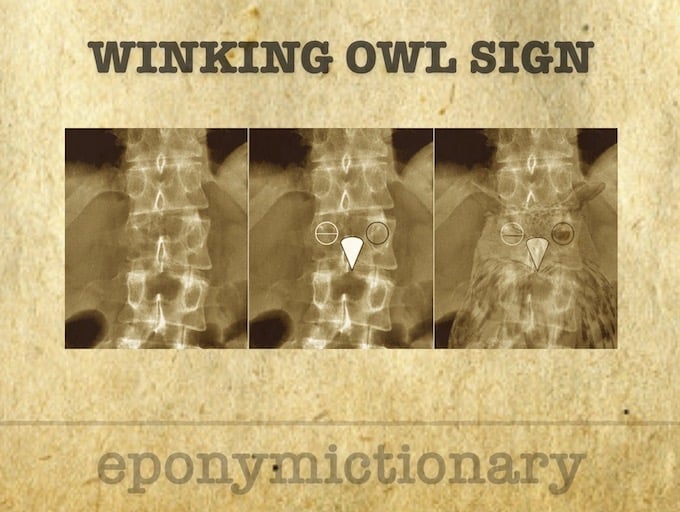
Mario Bertolotti
Mario Bertolotti (1876-1957) was an Italian radiologist. Bertolotti syndrome (1917) L5 transverse processes and sacrum Sacralisation

Mario Bertolotti (1876-1957) was an Italian radiologist. Bertolotti syndrome (1917) L5 transverse processes and sacrum Sacralisation

Baastrup sign (kissing spines) refers to an orthopaedic condition / radiological sign with enlargement and approximation of adjacent spinous processes with normal intervertebral disc height and neuroforamina

Heinrich Ernst Albers-Schönberg (1865 – 1921) was a German radiologist. Albers-Schönberg disease (osteopetrosis, marble bone disease)

Albers-Schönberg disease is the most common form of osteopetrosis. Also known as autosomal dominant osteopetrosis type II (ADO II)

February 2022 Adult Emergency Medicine Chest X-ray interpretation with Daniel Escobar, Angela Pikus, and Alex Blackwell

Jervell and Lange-Nielsen syndrome (JLNS) Congenital (autosomal recessive) long QT syndrome (LQTS) severe, bilateral sensorineural hearing loss

Douglas Theodore Prehn (1901 - 1974) was an American urologist

Congenital (autosomal dominant) long QT syndrome (LQTS). Unlike Jervell-Lange-Nielsen, there is no congenital hearing loss (deafness) present

February 2022 Pediatric Emergency Medicine Chest X-ray interpretation with Neha Ray, MD and Kaley El-Arab, MD

One of the first signs of vertebral metastases is disappearance of the pedicle on the AP X-ray. This is known as the 'absent pedicle' or 'winking owl sign'.

Mona Dew Roberts (1878-1936) was a Welsh General Practitioner and anaesthetist. Mona Roberts oropharyngeal airway (1916)

Network Five Emergency Medicine Journal Club Episode 14 - Cardiology. Topics include HEART score, EDACS and the future of AI